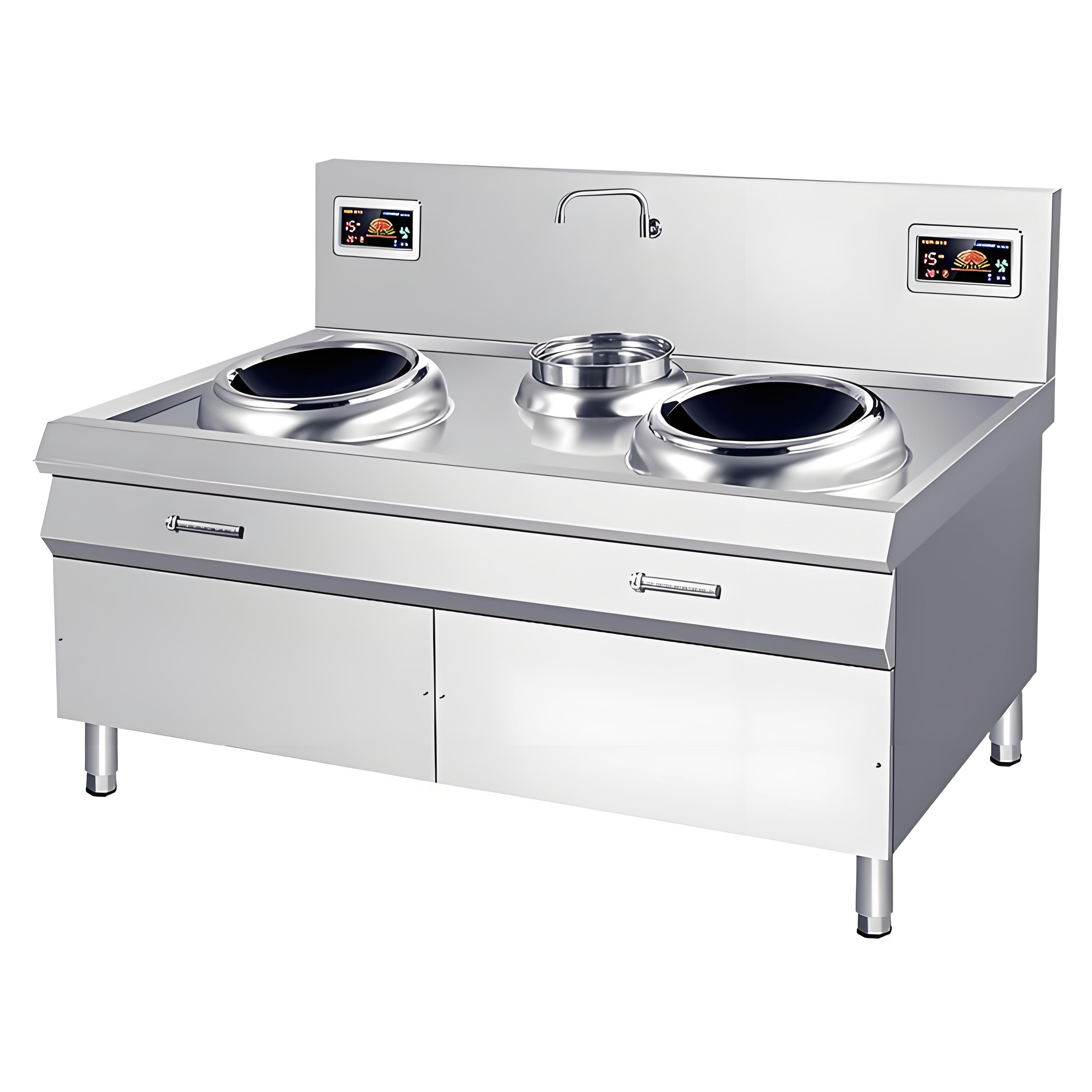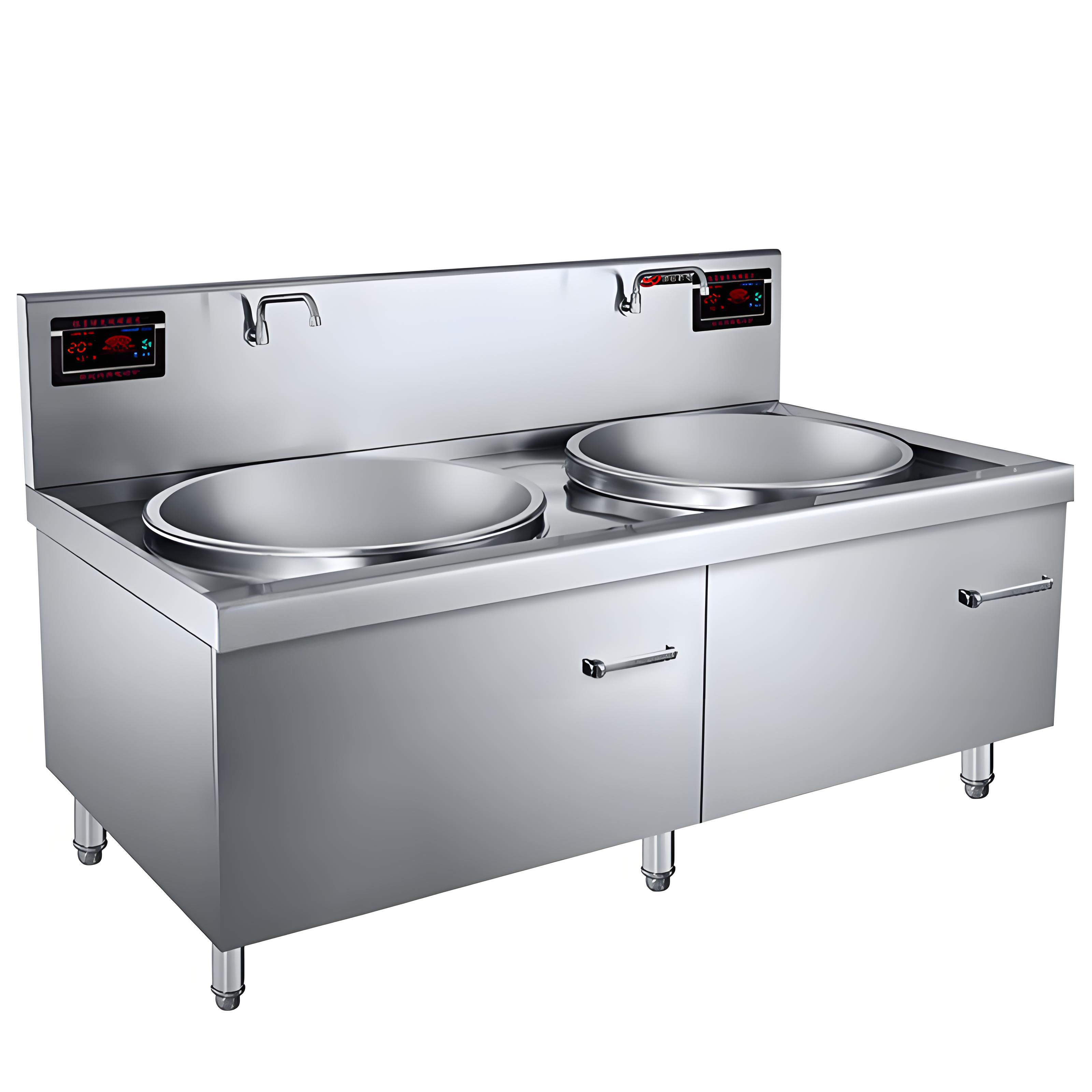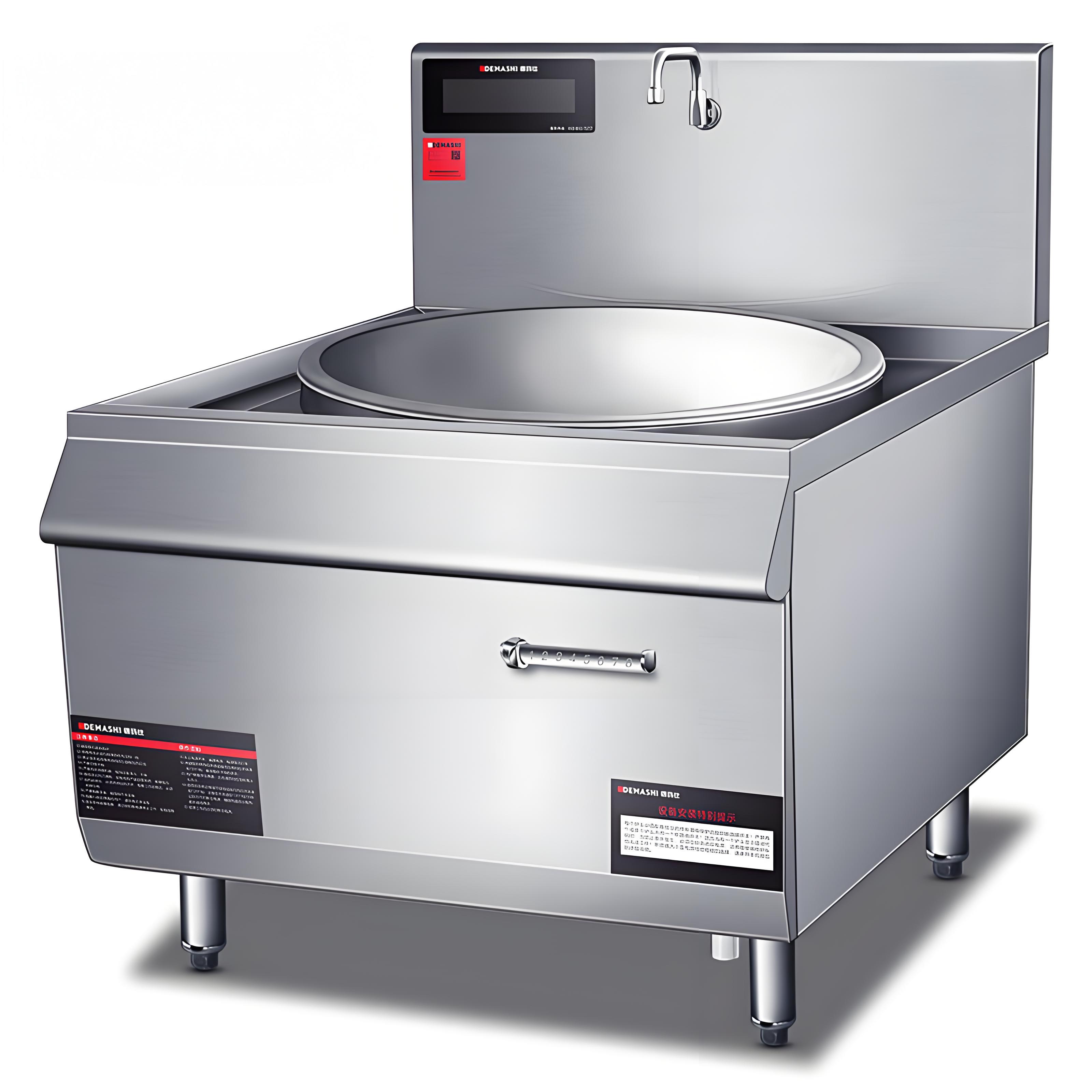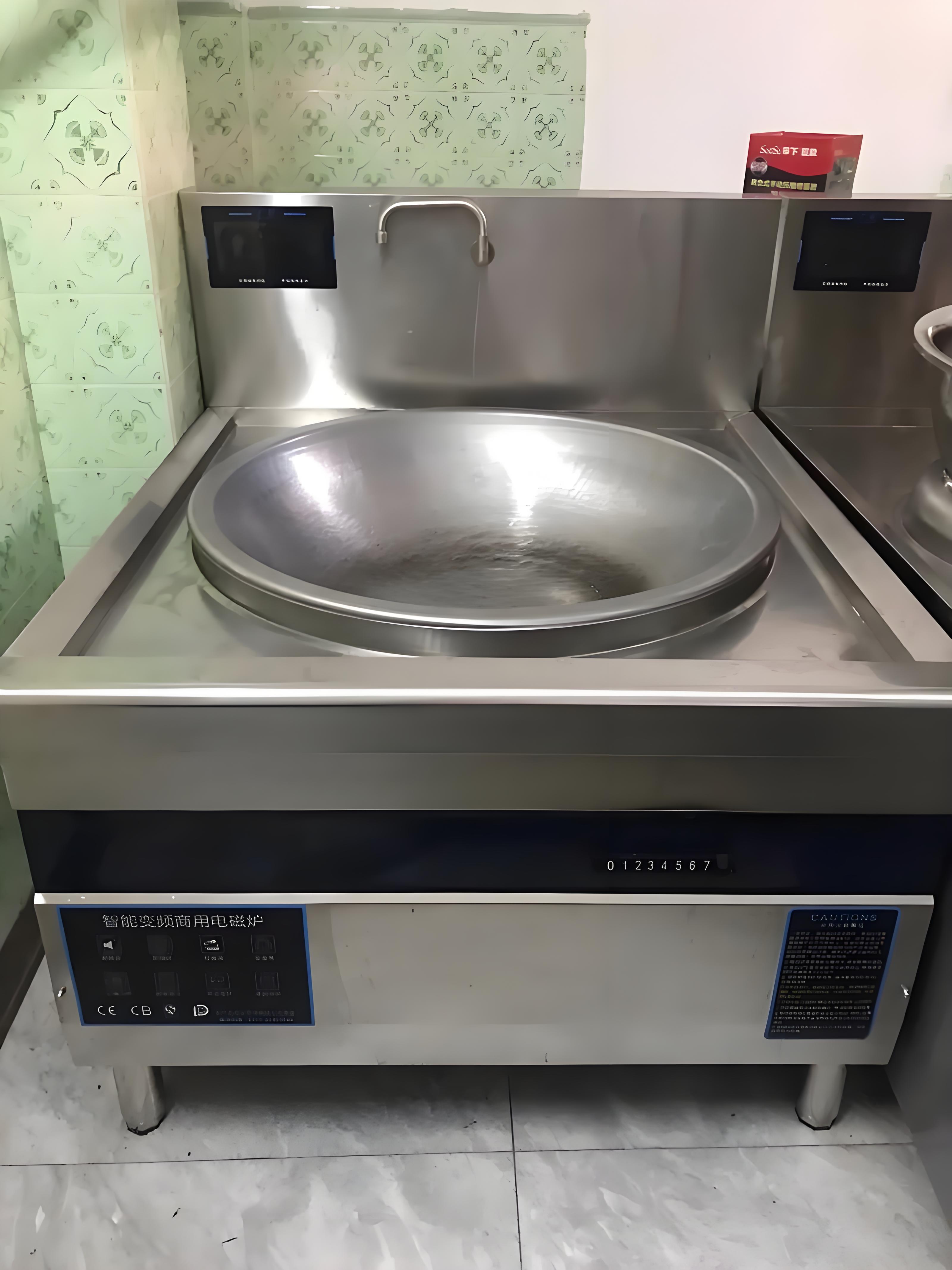As someone who’s spent over a decade in the commercial kitchen equipment industry, I’ve seen induction cookers evolve from niche gadgets to indispensable tools in professional kitchens. My years working with chefs, restaurant owners, and equipment suppliers have given me a front-row seat to what makes a commercial induction cooker truly stand out. Whether you’re a restaurant owner upgrading your kitchen or a distributor looking to stock reliable equipment, choosing a high-quality induction cooker can make or break your operation. Today, I’ll walk you through the key factors to consider when evaluating these machines, drawing from real-world insights and practical experience to help you make an informed decision.
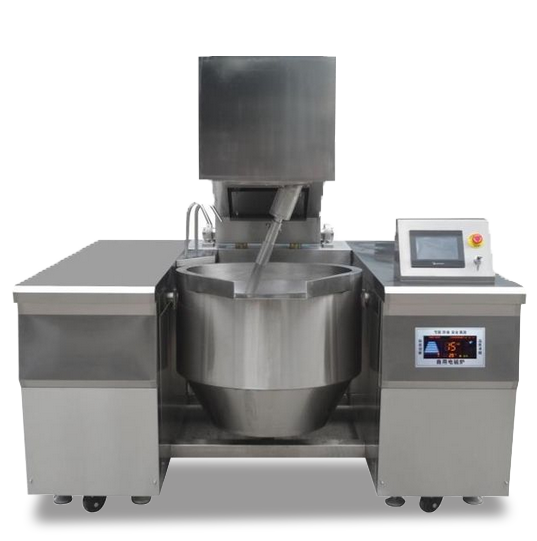
Why Material Quality Matters
The first thing I always check when evaluating a commercial induction cooker is the build material. In a bustling kitchen, equipment takes a beating—spills, high heat, and constant use are the norm. A high-quality cooker needs to withstand this chaos. Stainless steel is the gold standard for the cooker’s body. It’s waterproof, corrosion-resistant, and can handle the high-pressure environment of a commercial kitchen. Look for 304-grade stainless steel or higher, as it offers superior durability and resists rust even in humid conditions.
The cooking surface is equally critical. Most commercial induction cookers use a glass-ceramic surface, which is designed to handle high temperatures without cracking. However, not all glass-ceramic surfaces are created equal. Premium models use low-thermal-expansion glass-ceramic, which resists thermal shock and stays intact even when subjected to rapid temperature changes. I once saw a chef accidentally pour cold water on a hot induction surface during a busy service—cheaper models might have cracked, but a high-quality one shrugged it off without a scratch.
Power and Performance: The Heart of the Cooker
When it comes to performance, wattage is a key indicator. Commercial induction cookers typically range from 3,500W to 8,000W, operating at 220-400V and 50-60Hz, far surpassing the 1,800-2,200W of household models. Higher wattage means faster heating, which is crucial in environments like restaurants or hotels where speed is everything. For example, a 3,600W induction cooker can boil six cups of water in about three minutes, compared to over five minutes for a gas burner.
But power isn’t just about raw numbers. Temperature precision is what separates a good cooker from a great one. High-end models feature sensitive temperature sensors and advanced pulsing techniques to maintain a steady temperature within a 5-10°C range. This is vital for tasks like simmering sauces or searing meats, where consistency is non-negotiable. I recall a chef friend struggling with a low-end model that couldn’t hold a steady simmer—it was either boiling or barely warm, ruining delicate dishes. Look for cookers with digital controls and multiple power settings (ideally 10-20 levels) for fine-tuned control.
|
Feature |
Why It Matters |
What to Look For |
Example Benefit |
|---|---|---|---|
|
Material |
Durability in harsh kitchen environments |
304 stainless steel, low-expansion glass-ceramic |
Resists corrosion and thermal shock |
|
Wattage |
Speed of cooking |
3,500W–8,000W, 220-400V |
Boils water in ~3 minutes |
|
Temperature Precision |
Consistent cooking results |
Sensitive sensors, 10-20 power levels |
Perfect simmers and sears |
|
Safety Features |
Protects staff and equipment |
Auto shut-off, pan detection |
Prevents burns and overheating |
Safety Features: A Non-Negotiable Priority
Safety is a big deal in commercial kitchens, where accidents can cost time, money, and even lives. Induction cookers have an edge over gas or traditional electric models because they don’t rely on open flames or red-hot coils. The electromagnetic field heats the cookware directly, leaving the surface relatively cool. But not all induction cookers are equally safe. High-quality models come with automatic shut-off and pan-detection technology, which stop the cooker from heating if no compatible cookware is present or if the pan is removed. This feature alone can prevent costly mistakes, like a distracted line cook leaving an empty burner on.
Another safety must-have is overheat protection. I’ve heard stories of lower-grade cookers shutting down mid-service due to overheating, leaving chefs scrambling. Premium models have robust cooling systems, like quiet scroll fans and cleanable air filters, to keep internal components from frying. Check for conformal-coated circuit boards, too—they protect against grease and moisture, which are unavoidable in a busy kitchen.
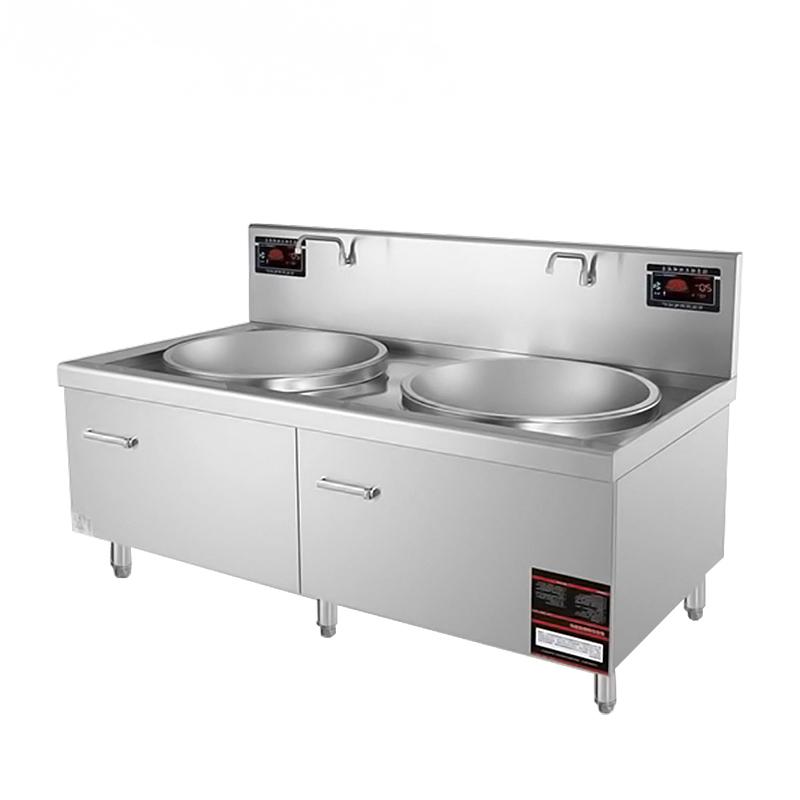
Ease of Use and Maintenance
A cooker might have all the bells and whistles, but if it’s a pain to use or clean, it’s not going to last in a fast-paced kitchen. User-friendly controls are a must. I prefer models with physical knobs over touch buttons because they’re easier to adjust with wet or greasy hands, though some kitchens opt for buttons for a sleeker, easier-to-clean surface. Whichever you choose, ensure the controls are intuitive and responsive. I once worked with a restaurant that switched to a cooker with a clunky touch panel—staff accidentally turned off burners mid-service because pots slid onto the controls.
Cleaning is another area where induction shines. The flat glass-ceramic surface is a dream compared to scrubbing around gas burners. However, you’ll want a cooker that can handle gentle cleaning without scratching. Avoid abrasive cleaners, and look for models with spill-resistant edges to keep messes contained. Regular maintenance, like checking cooling vents weekly and replacing air filters monthly, keeps the cooker running smoothly. I’ve seen kitchens extend the life of their equipment by years just by following these simple steps.
Warranty and After-Sales Support
A good warranty is a sign of a manufacturer’s confidence in their product. Most commercial induction cookers come with a 1-2 year warranty, covering critical components like the control panel, fan, and IGBT (insulated gate bipolar transistor). However, parts like the glass surface or outer shell are often excluded, so it’s wise to keep spare parts on hand to avoid downtime. I always advise clients to check the supplier’s reputation for after-sales support. A reliable supplier should offer troubleshooting guides, readily available manuals, and responsive customer service. For example, brands like Leadstov, with 20 years of experience, provide detailed support that can save you from costly repairs.
When evaluating warranties, don’t just look at the duration—check what’s covered and how easy it is to access service. A friend once bought a budget cooker with a “great” warranty, only to find that replacement parts took weeks to arrive, stalling their kitchen operations. Opt for suppliers with a proven track record, ideally backed by certifications like ISO9001 for quality management.
Energy Efficiency and Cost Savings
One of the biggest selling points of induction cookers is their energy efficiency. They deliver 85-95% of their energy directly to the cookware, compared to 35-40% for gas and 45-50% for traditional electric ranges. This efficiency translates to lower utility bills, which is a game-changer for high-volume kitchens. For instance, a restaurant I consulted for cut their energy costs by nearly 20% after switching to induction. Plus, induction cookers don’t heat up the kitchen as much, reducing the need for heavy-duty ventilation and cooling systems.
However, the upfront cost can be a hurdle. Commercial induction cookers are pricier than gas or electric alternatives, and you may need to invest in induction-compatible cookware (pots and pans with a magnetic base, like stainless steel or cast iron). To offset this, check for financial incentives, like those offered through the U.S. Inflation Reduction Act, which can subsidize the cost of energy-efficient appliances. Over time, the savings on energy and maintenance often outweigh the initial investment.
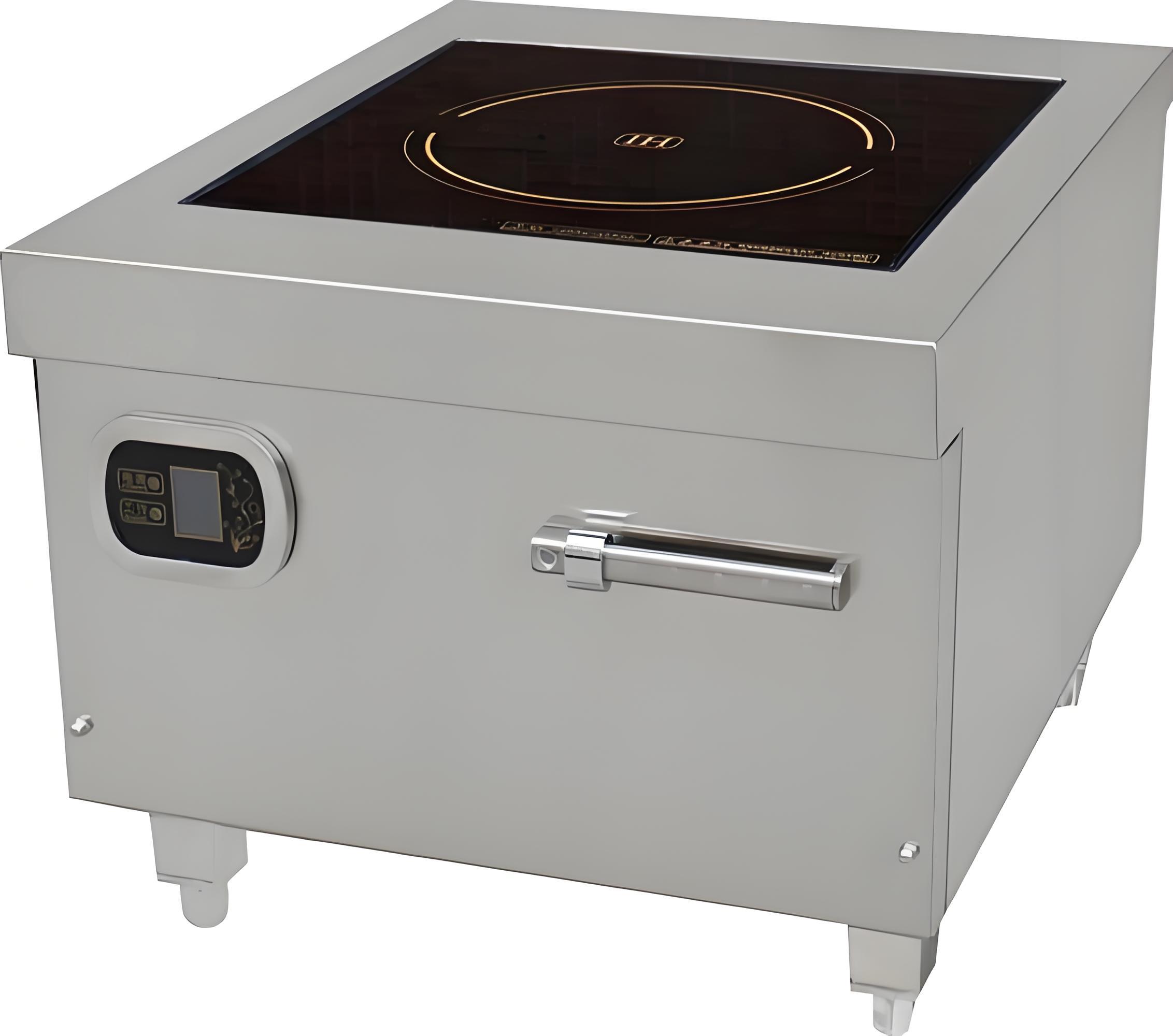
Compatibility with Kitchen Needs
Not every cooker is right for every kitchen. Consider your cooking volume and style. A fast-food restaurant might need a high-wattage, single-hob unit for quick tasks, while a fine-dining establishment might benefit from a multi-hob model with precise temperature control for complex dishes. Space constraints are another factor. Countertop models are great for smaller kitchens, while step-up units save space by aligning hobs vertically. I once helped a food truck owner pick a compact, portable induction cooker that fit their tiny workspace but still delivered the power needed for high-volume service.
Also, think about cookware compatibility. Only magnetic materials work with induction, so test your existing pots and pans with a magnet. If they don’t stick, you’ll need to budget for new cookware. High-quality brands like Vollrath or Lodge offer durable, induction-ready options that won’t break the bank.
Real-World Performance: What Chefs Say
Over the years, I’ve talked to countless chefs about their experiences with induction. Many, like Michelin-starred chef Alexandre Couillon, praise the precision and speed of induction, saying it “sublimes the quality of the products.” Others, like Neil Perry, love how easy it is to clean and how it cuts energy waste. However, some chefs note a learning curve. Induction heats up faster than gas or electric, so you might need to adjust recipes or lower heat settings to avoid boil-overs. One chef I know burned through a batch of caramel before realizing their induction cooker was far more responsive than their old gas range.
Another common concern is the buzzing sound some cookers make, caused by the electromagnetic field vibrating the cookware. High-quality models minimize this with better coil design, but it’s worth testing a unit in person if noise is a concern, especially for front-of-house display kitchens.
Choosing a Reputable Manufacturer
The manufacturer behind the cooker is just as important as the cooker itself. Look for brands with a strong industry reputation and a history of innovation. Companies like Hatco or Leadstov have decades of experience and invest in automated production lines for consistent quality. Check if the manufacturer has certifications like ISO9001, which ensures rigorous quality control. For example, high-quality IGBT components undergo strict testing to handle the high-load demands of a commercial kitchen.
When possible, visit the manufacturer’s website or contact their support team to ask about production processes and quality standards. A transparent manufacturer will gladly share details about their testing procedures or component sourcing. I once worked with a supplier who provided a detailed breakdown of their quality checks, which gave me confidence in their product’s reliability.
Practical Tips for Testing a Cooker
Before committing to a purchase, test the cooker in a real-world setting if possible. Many suppliers offer demo units or trial periods. Pay attention to:
Heating speed: Does it boil water quickly and evenly?
Temperature stability: Can it maintain a low simmer without fluctuating?
Ease of use: Are the controls intuitive for your staff?
Noise level: Is the buzzing distracting in your kitchen environment?
If you can’t test in person, read reviews from other restaurant owners or check industry forums like Reddit’s r/Cooking or r/cookware. Real user feedback can reveal quirks that specs don’t show, like how a particular model handles heavy woks or frequent use.
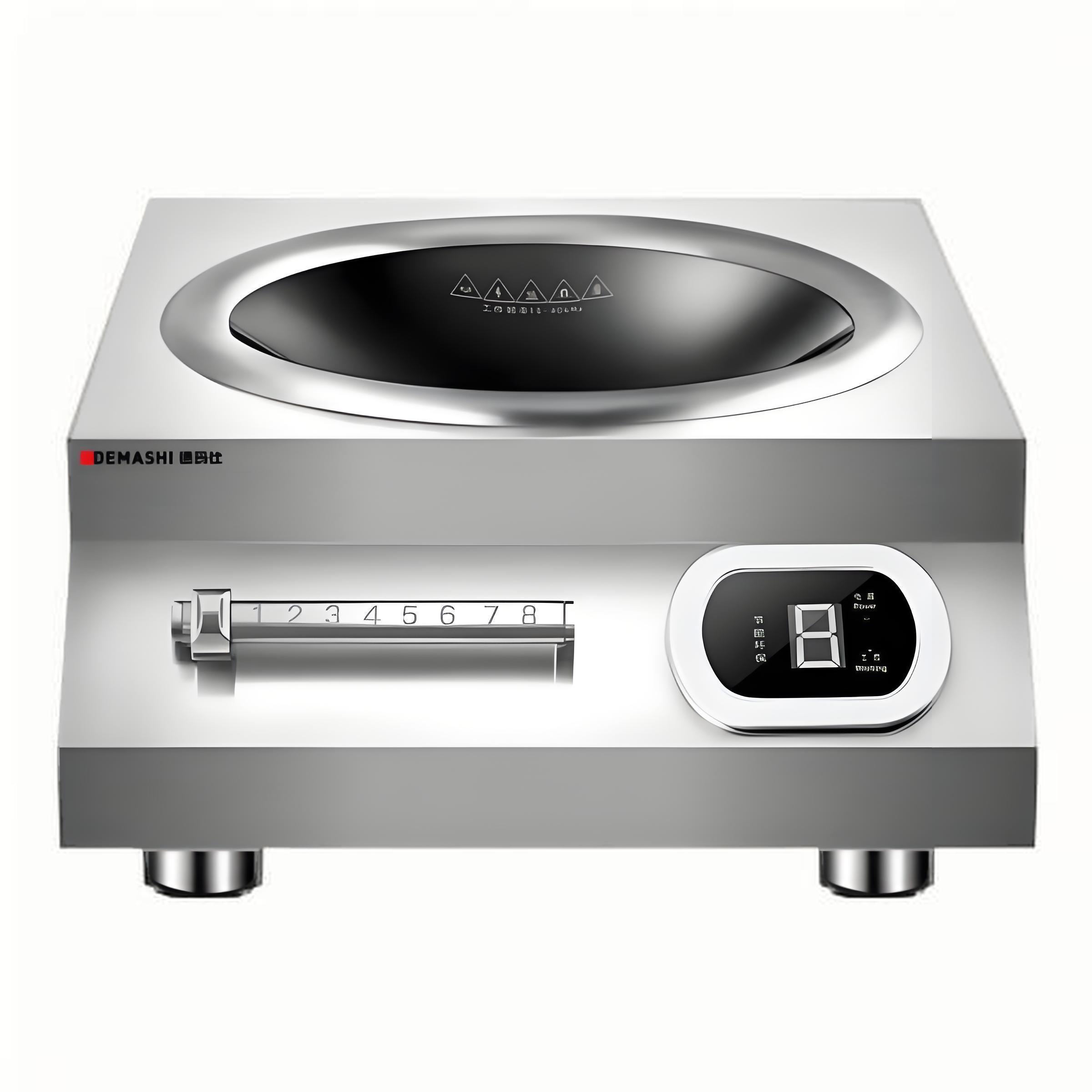
Balancing Cost and Quality
Price is always a factor, but don’t skimp on quality to save a few bucks. A cheap cooker might seem like a deal until it breaks down mid-service or racks up high energy bills. Instead, look for a balance between cost and features. For example, a mid-range cooker with solid temperature control and a decent warranty might outperform a budget model with a flashy design but poor durability. Compare specs like wattage, temperature range, and fan quality, and avoid falling for marketing buzzwords that don’t translate to real-world performance.
Environmental and Operational Benefits
Beyond performance, induction cookers offer environmental benefits. They produce no indoor air pollutants, unlike gas stoves, which emit nitrous oxides and carbon monoxide. This is a big deal for staff health and compliance with regulations in regions pushing for sustainable kitchens. Plus, their cool operation reduces the need for excessive ventilation, saving on HVAC costs. I’ve seen restaurants in hot climates save thousands annually by switching to induction, simply because they didn’t need to crank the AC as much.
My Personal Take
After years in the industry, I can say that a high-quality commercial induction cooker is an investment in your kitchen’s future. It’s not just about cooking faster—it’s about creating a safer, more efficient, and more sustainable workspace. I’ve seen firsthand how a reliable cooker can transform a kitchen’s workflow, letting chefs focus on creativity instead of fighting with finicky equipment. But choosing the right one takes research and a clear understanding of your needs. By prioritizing material quality, performance, safety, and support, you’ll find a cooker that delivers for years to come.
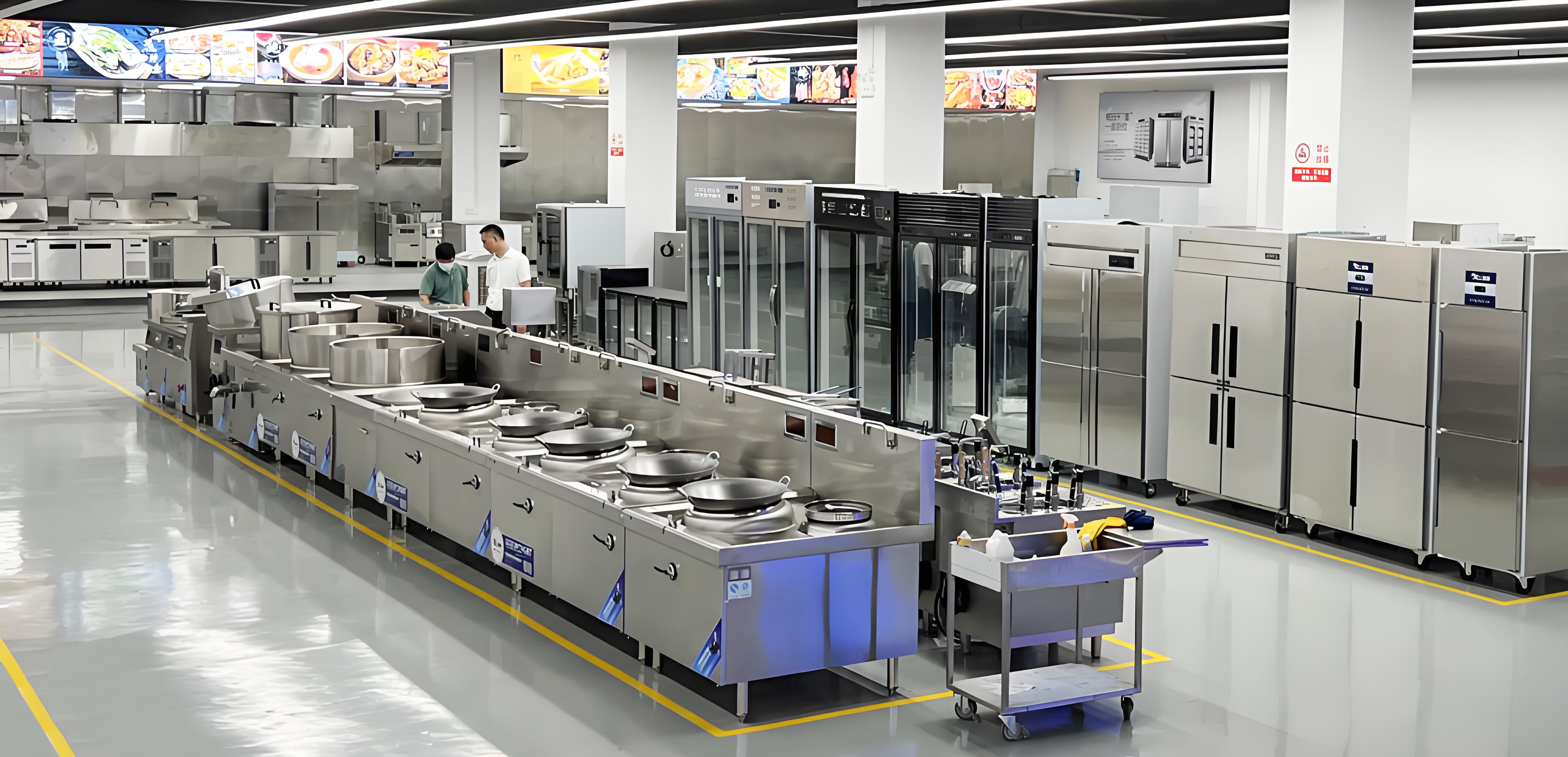
Related Questions and Answers
Q: Can I use my existing cookware with a commercial induction cooker?
A: Only cookware with a magnetic base (like stainless steel or cast iron) works with induction. Test your pots and pans with a magnet—if it sticks, they’re compatible. If not, you’ll need to invest in induction-ready cookware.
Q: How do I know if a manufacturer is trustworthy?
A: Look for certifications like ISO9001, check their industry reputation, and read user reviews. Contact the supplier directly to ask about their quality control processes and after-sales support.
Q: Are induction cookers worth the higher upfront cost?
A: Yes, for most commercial kitchens. They save on energy costs, reduce ventilation needs, and improve safety. Incentives like the Inflation Reduction Act can also offset the initial cost.
Q: Why does my induction cooker buzz?
A: The buzzing comes from the electromagnetic field vibrating the cookware. High-quality models reduce this with better coil design, but it’s normal to some extent. Test the cooker in person if noise is a concern.
Q: How often should I maintain my induction cooker?
A: Wipe the surface after every use, check cooling vents weekly, and replace air filters monthly. Schedule professional maintenance annually to catch potential issues early.
By focusing on these factors and doing your homework, you’ll be well-equipped to choose a commercial induction cooker that meets your kitchen’s demands and stands the test of time.
